
Here we are again in Tokyo, my favorite city here in Japan. I am sure there is something for everyone to enjoy, here in this gigantic metropolis. Sometimes the city is modern, loud and exciting, but then in another place again very traditional, thoughtful and almost quiet. Where else then suddenly everything comes together and you find a stimulating but at the same time soothing mix of all the things that make Tokyo.
A few years ago I was a regular visitor to the Japanese capital and I enjoyed wandering the streets and looking around, alone or in company. There is always something new to discover, because the many different neighborhoods of Tokyo are waiting with their own stories and impressions. But in the end everything connects again to one so unique city, which I have learned to love.
I think I appreciate the variety in Tokyo. Even on my first visit I was impressed by the mix of tradition and modernity, although the new has gained the upper hand in most places in the city. But there is always something of the old, almost mystical Tokyo to discover and marvel at. Sometimes it is delivered on a silver platter, i.e. in the travel guide, other times you have to search a little longer to find the traces of the past. Both have their charm, depending on my mood I succumb to different stimuli and let myself drift or be guided.
One of the places in Tokyo that I have probably visited most often is Senso-ji, a Buddhist temple in the Asakusa district. Located not far from the major Ueno train hub, Asakusa feels a bit out of time in many places. Some of its streets are a striking reminder of the last century and the Showa period, which has been gone for a while. Some places take you even further back in time and seem as if you are still in the Edo period, the era of the shoguns and samurais.
For example, Senso-ji, the largest and also oldest temple in Tokyo. The history of this temple dates back to the seventh century, when a temple was first built here. In its eventful history, the temple was destroyed several times, in the last century even twice in the great Kanto earthquake and in World War II, but it was always rebuilt. Traditionally, of course wood was used for this purpose, but during the last re-construction the temple was made of reinforced concrete, even though it is not really visible.
Buddhism is divided into different branches and sects, today the Senso-ji is the main temple of its own direction, the Shōkannon-shū. It is part of the Bandō Sanjūsankasho (坂東三十三箇所) pilgrimage route, which includes 33 Buddhist temples and passes through the Kanto region of northeastern Japan.
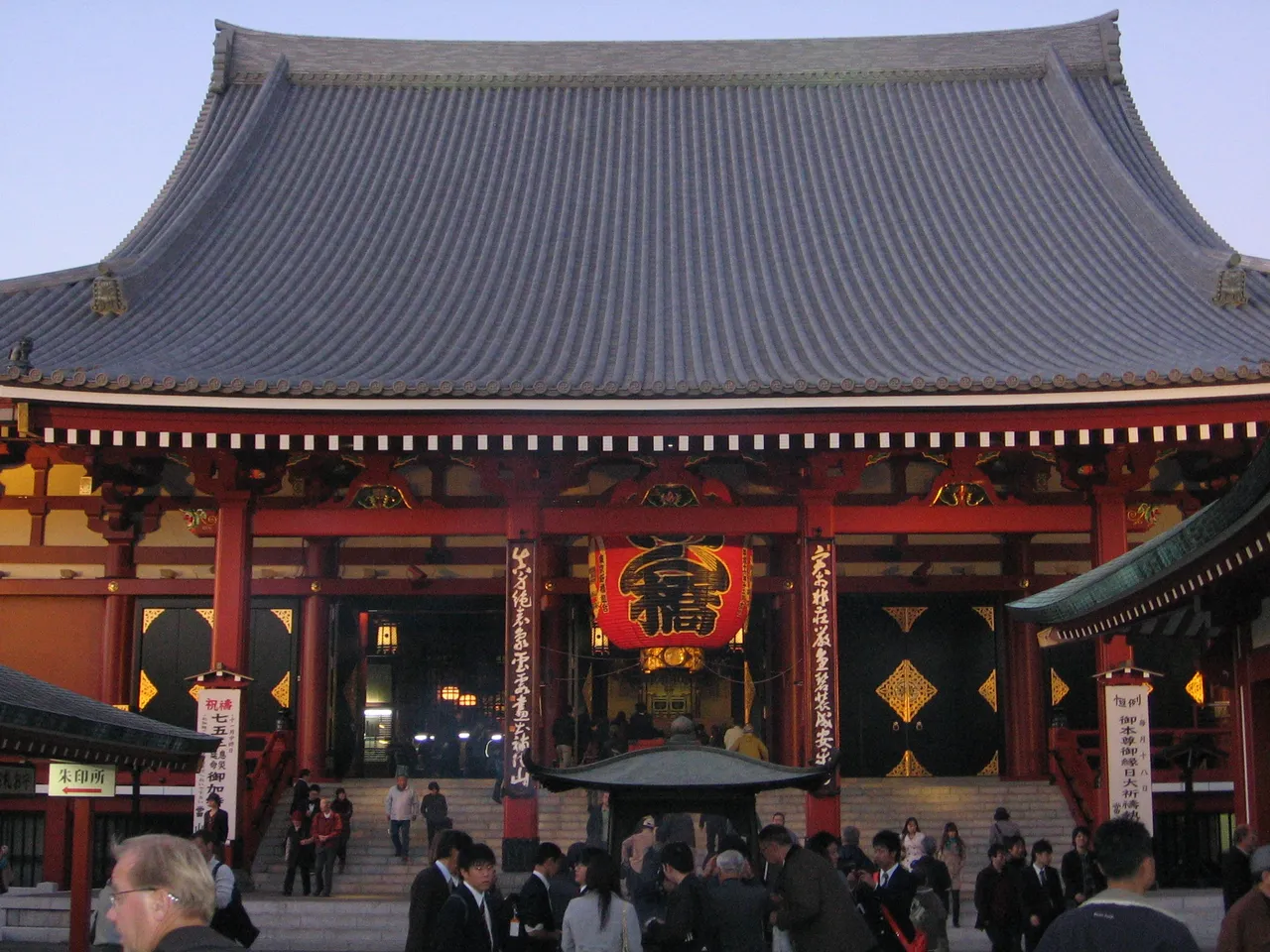
The temple complex is quite spacious, from the first large entrance gate the Kaminari-Mon, the Thunder Gate, the path leads between countless stalls to the second gate, the Hozo-Mom or Treasure House Gate (宝蔵門).
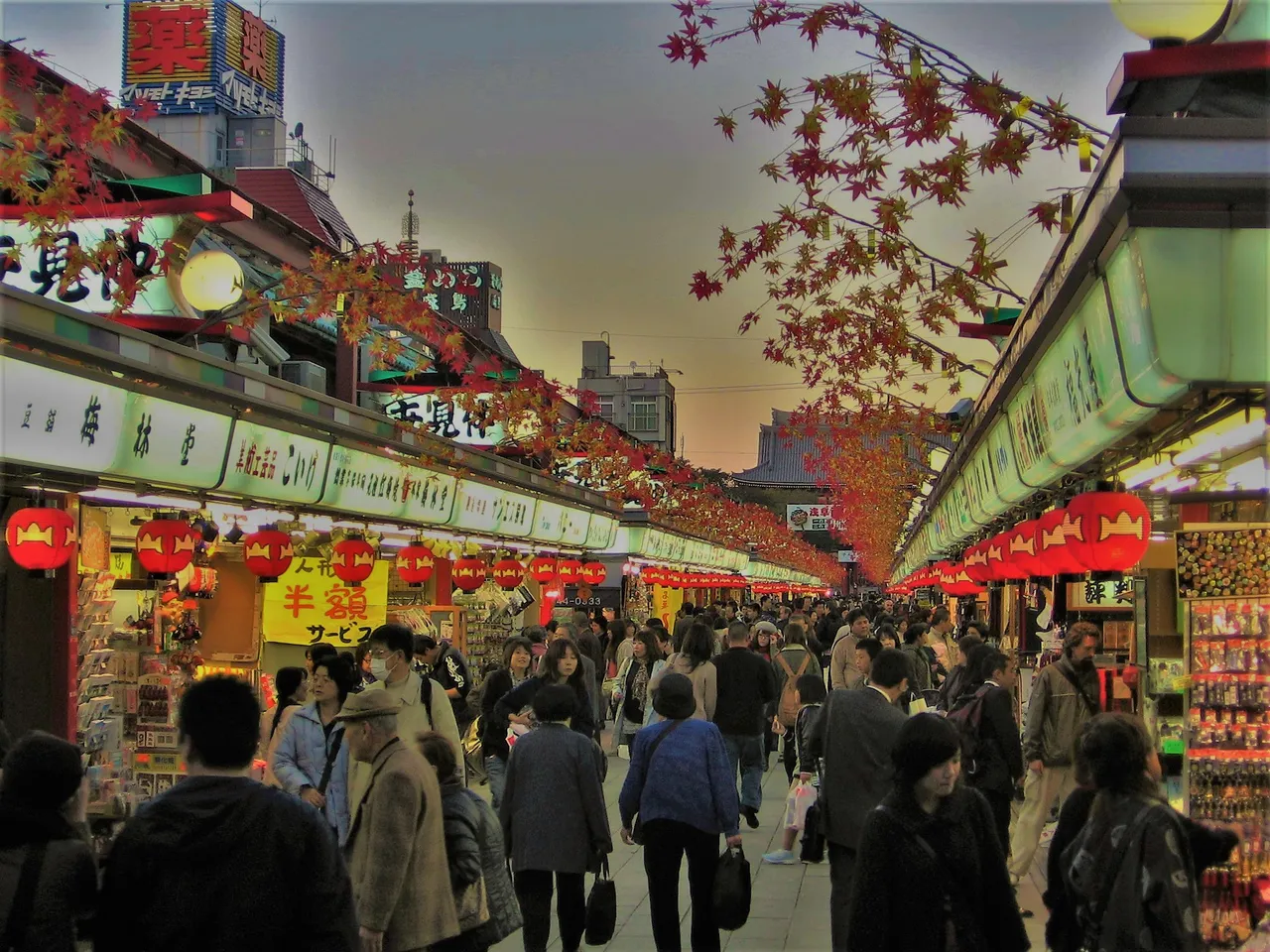
The way through here, also called Nakamise-dōri (仲見世通り), usually leads you through a large crowd of people. The Senso-ji is one of the biggest sights for tourists from home and abroad, and popular all year round. But already this hustle and bustle is part of the visit, and you should calmly immerse yourself in the constant stream of people streaming in and out of the temple. And along the way, just start marveling and looking at what the many small stores to the left and right of the path have to offer. Souvenirs and also arts and crafts, but also small snacks and refreshments, I always enjoy this bath in the crowd very much and it is just part of it for me.
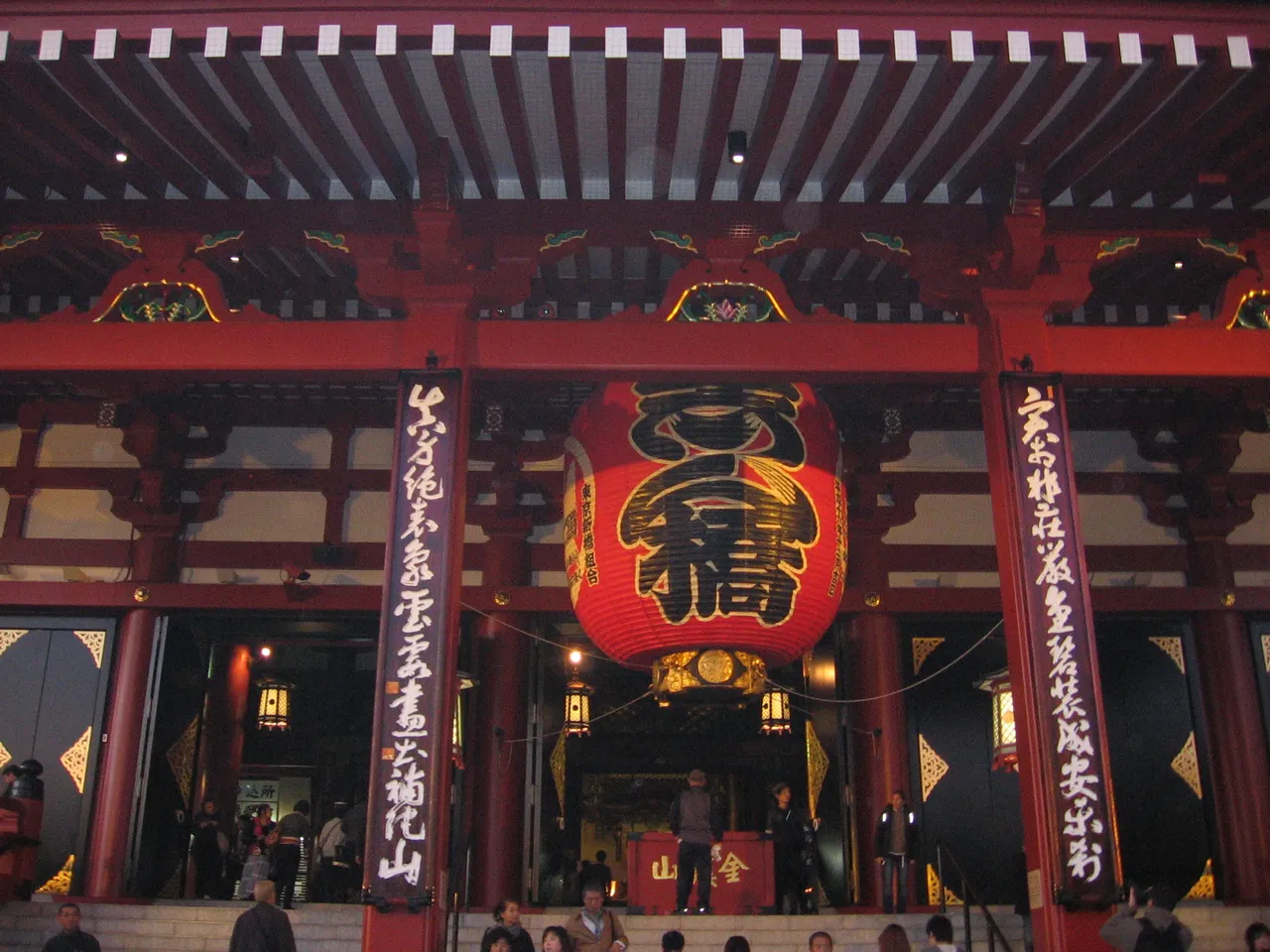
Red continues to dominate as the definitive hue at the main temple building as well. And here too, you finds some of those large paper lanterns, which are so characteristic of this temple complex. Once you have climbed the steps, you should stand a little apart and take a deep breath. Most people usually hurry directly inside and say their prayers, and then they are off again. But you should not better not be in a hurry here.
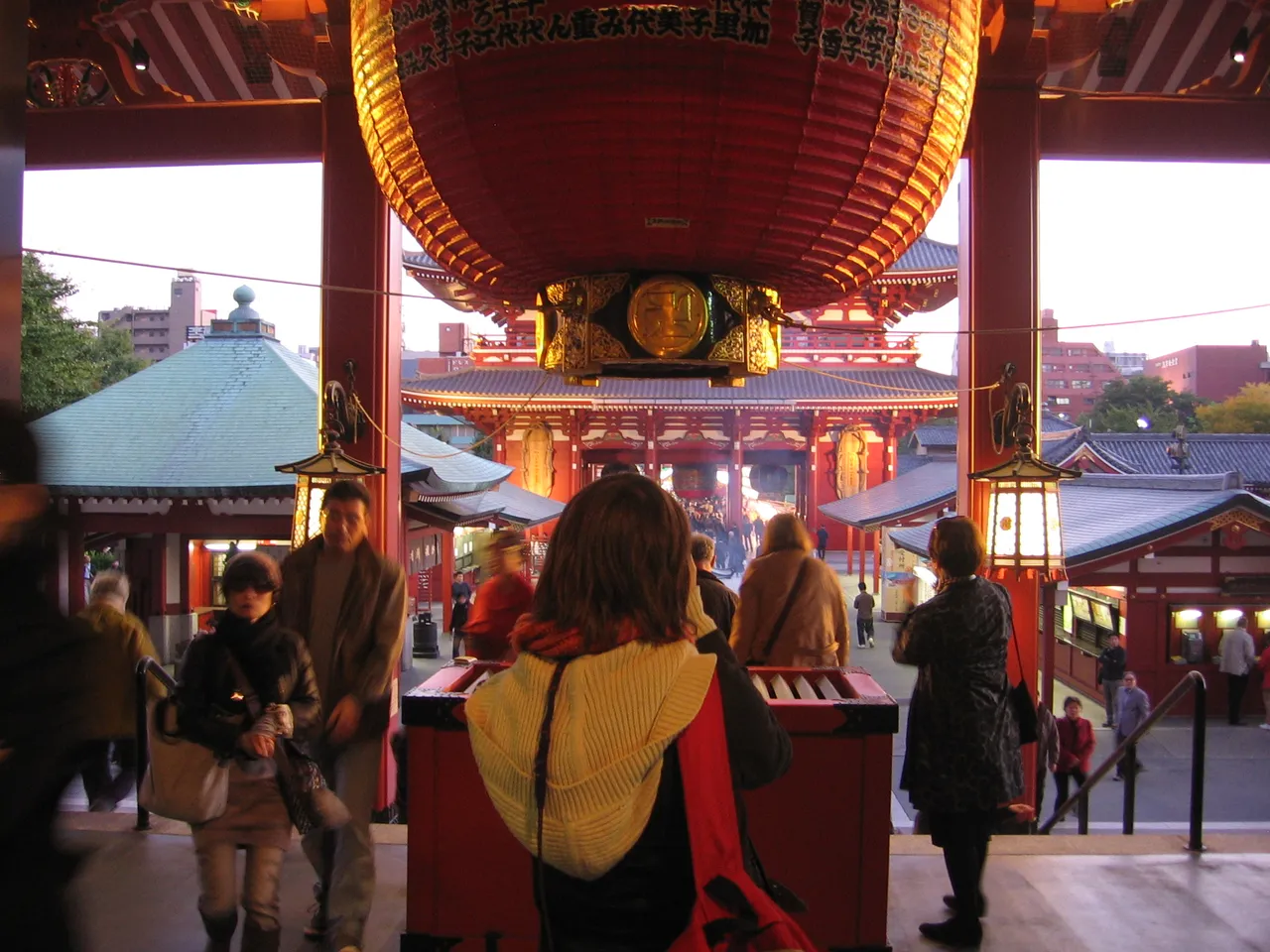
It is better to turn around first and take a look back at the Hozomon Gate. The atmosphere right in front of the temple is something very special, most people seem excited and somehow full of anticipation.
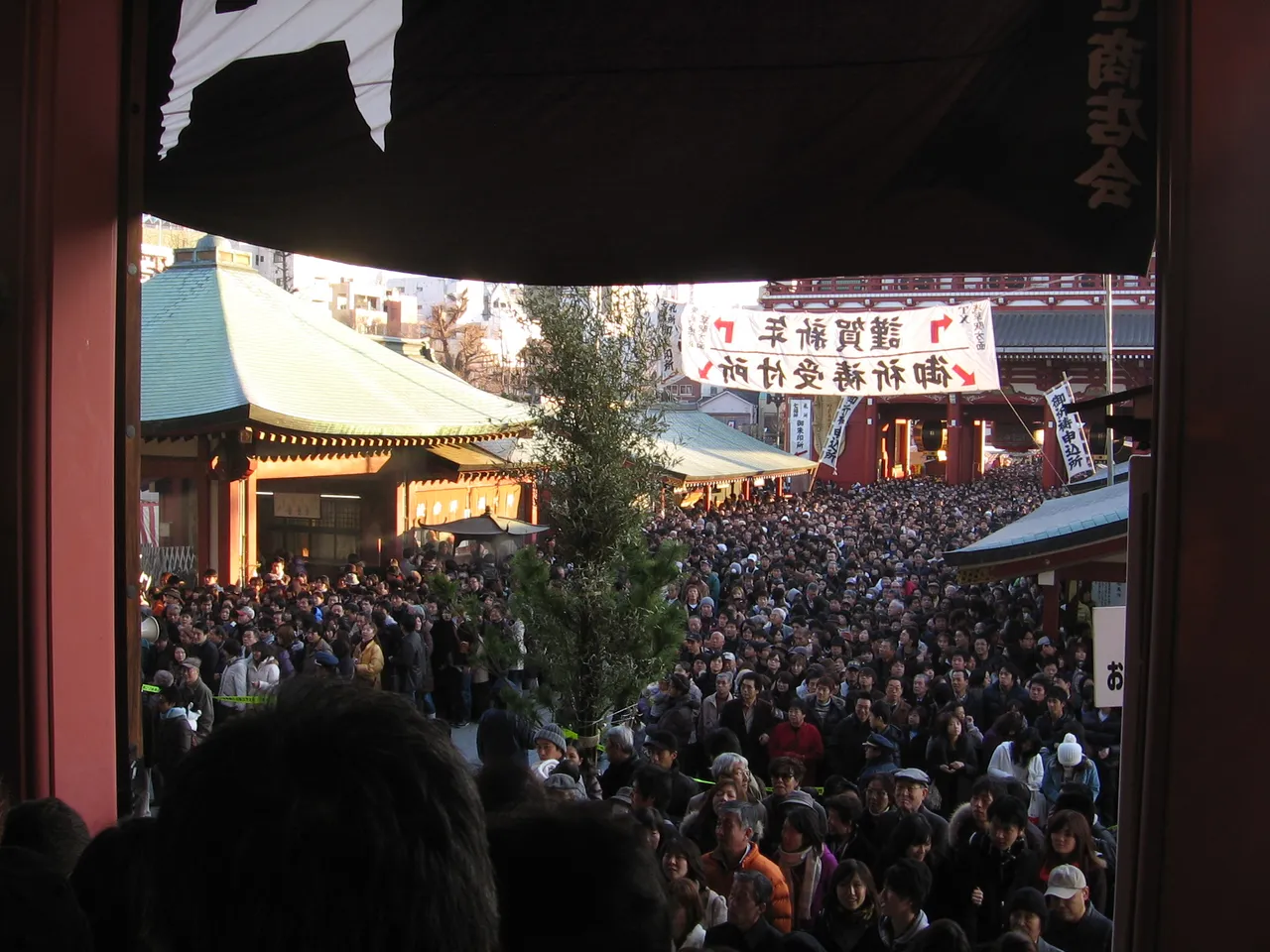
Especially at Hatsumode time, when the Japanese flock to their first visit to a temple or shrine in the new year, it can get crisply crowded here and it takes even longer until you finally arrive at the actual temple building. But this visit was also an experience for me that I would not want to miss.
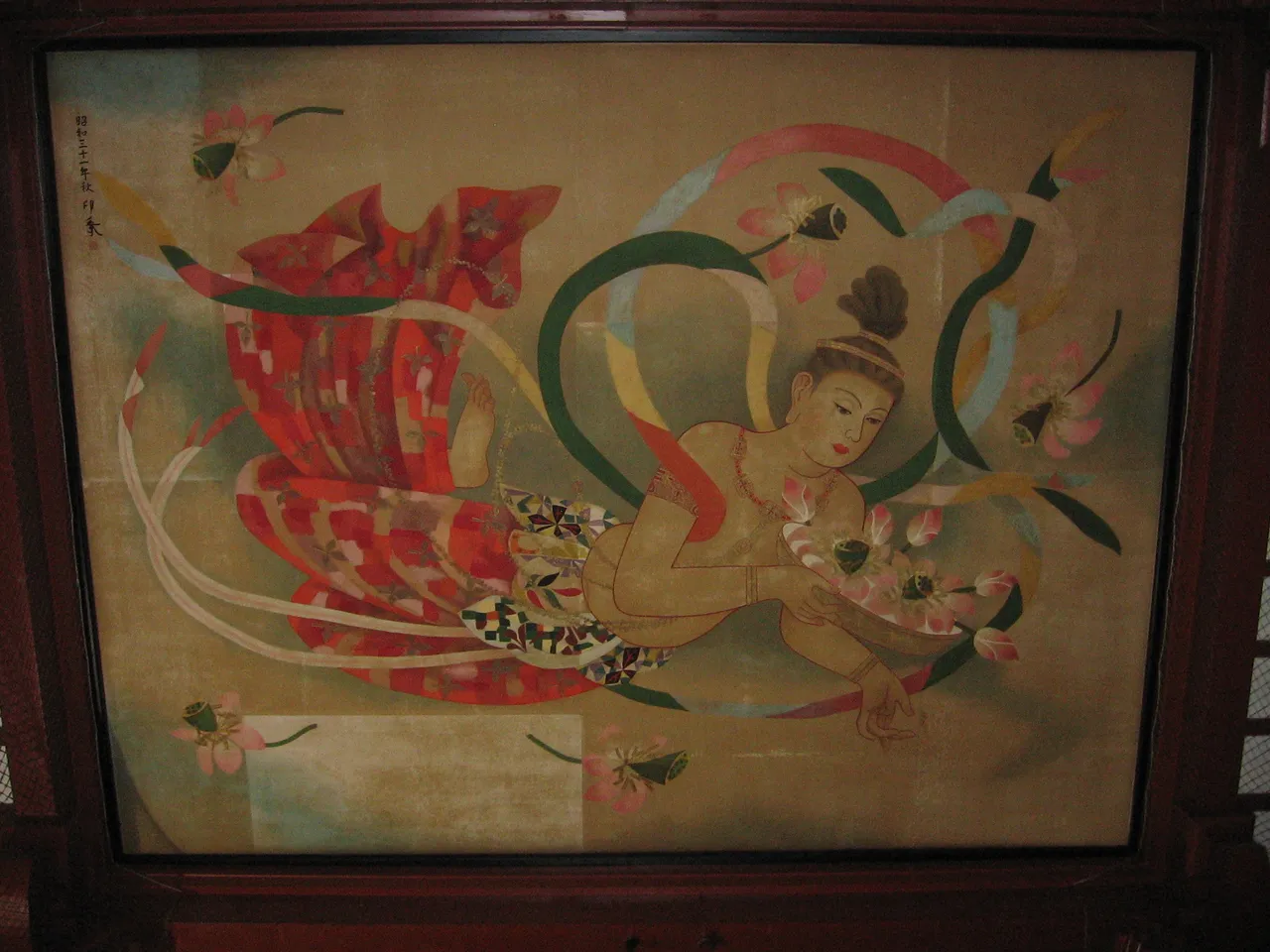
Inside the temple, it can get quite packed as people quickly say their prayers and leave a small donation which they hope will help keep the deities gracious. But if you let your eyes wander around, you can discover quite a few things here as well.
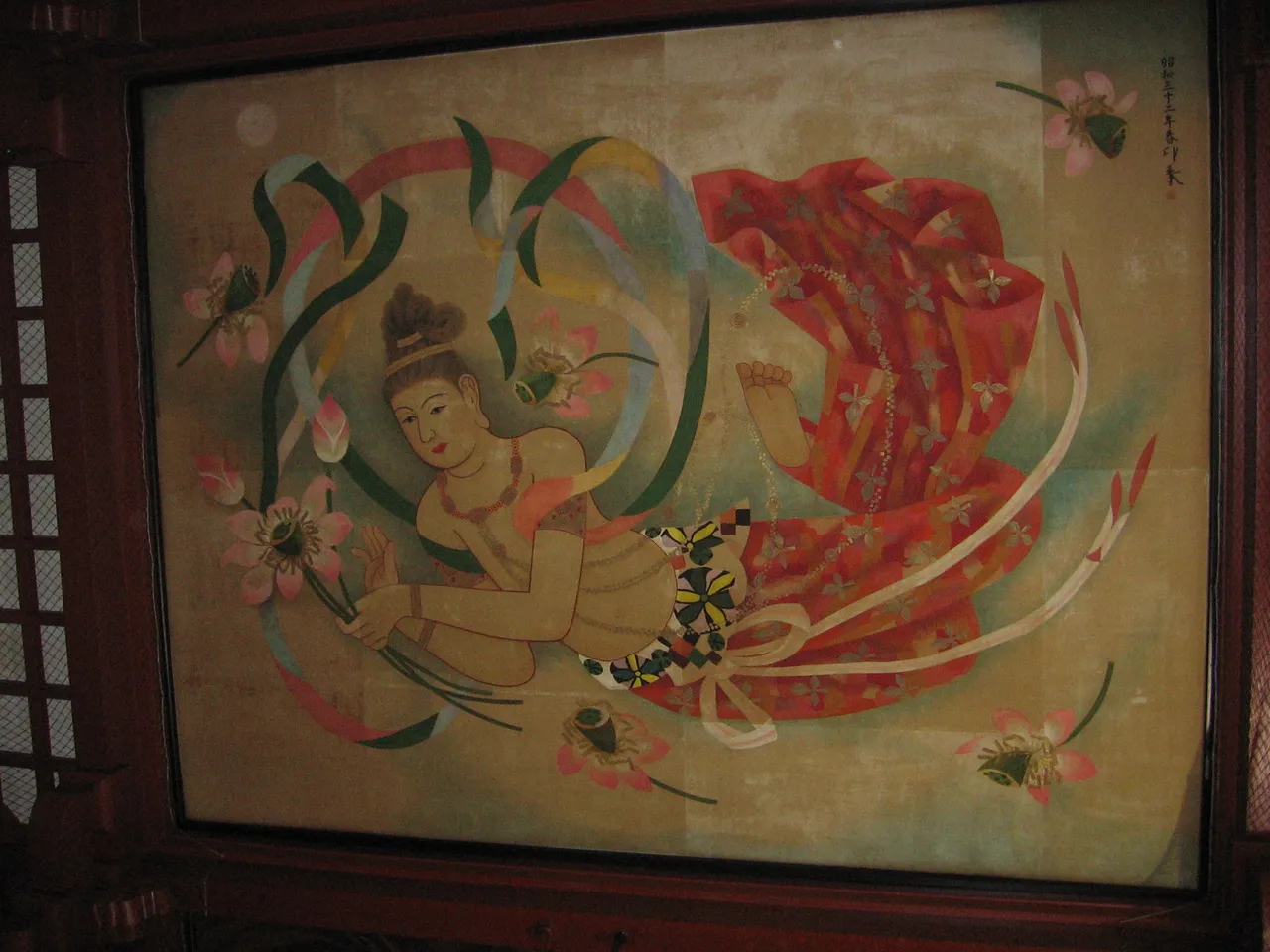
Like these ceiling paintings, which many people probably don't even notice. That's why it's a good idea to stand a bit off to the side and not be affected by all the shoving going on inside.
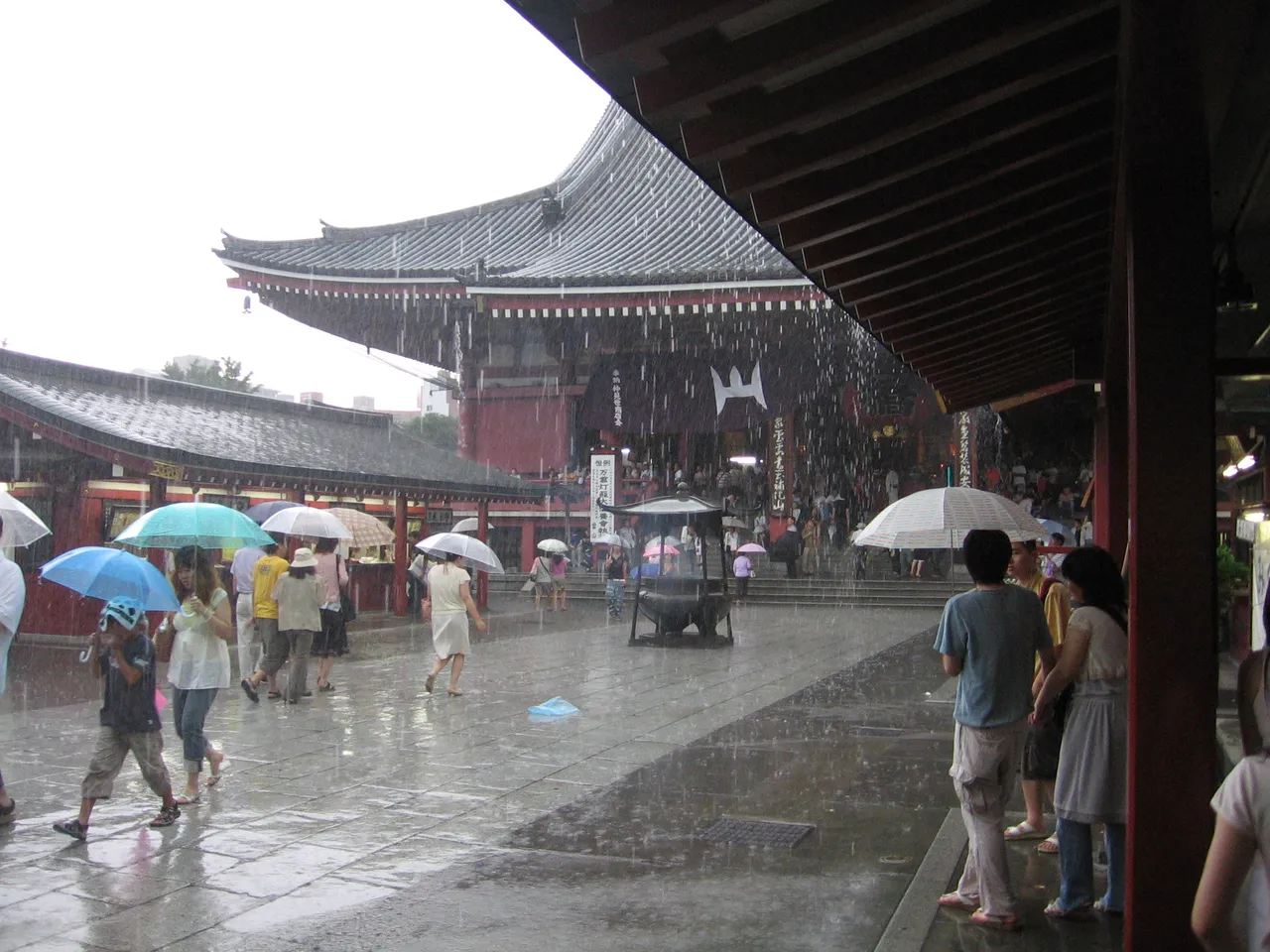
During one of my visits, I visited Senso-ji in the middle of August, and at that very moment, a heavy thunderstorm came down. But even this downpour did not affect the prevailing mood, on the contrary, most visitors finally had time to stop for a moment and really look around and to reflect.
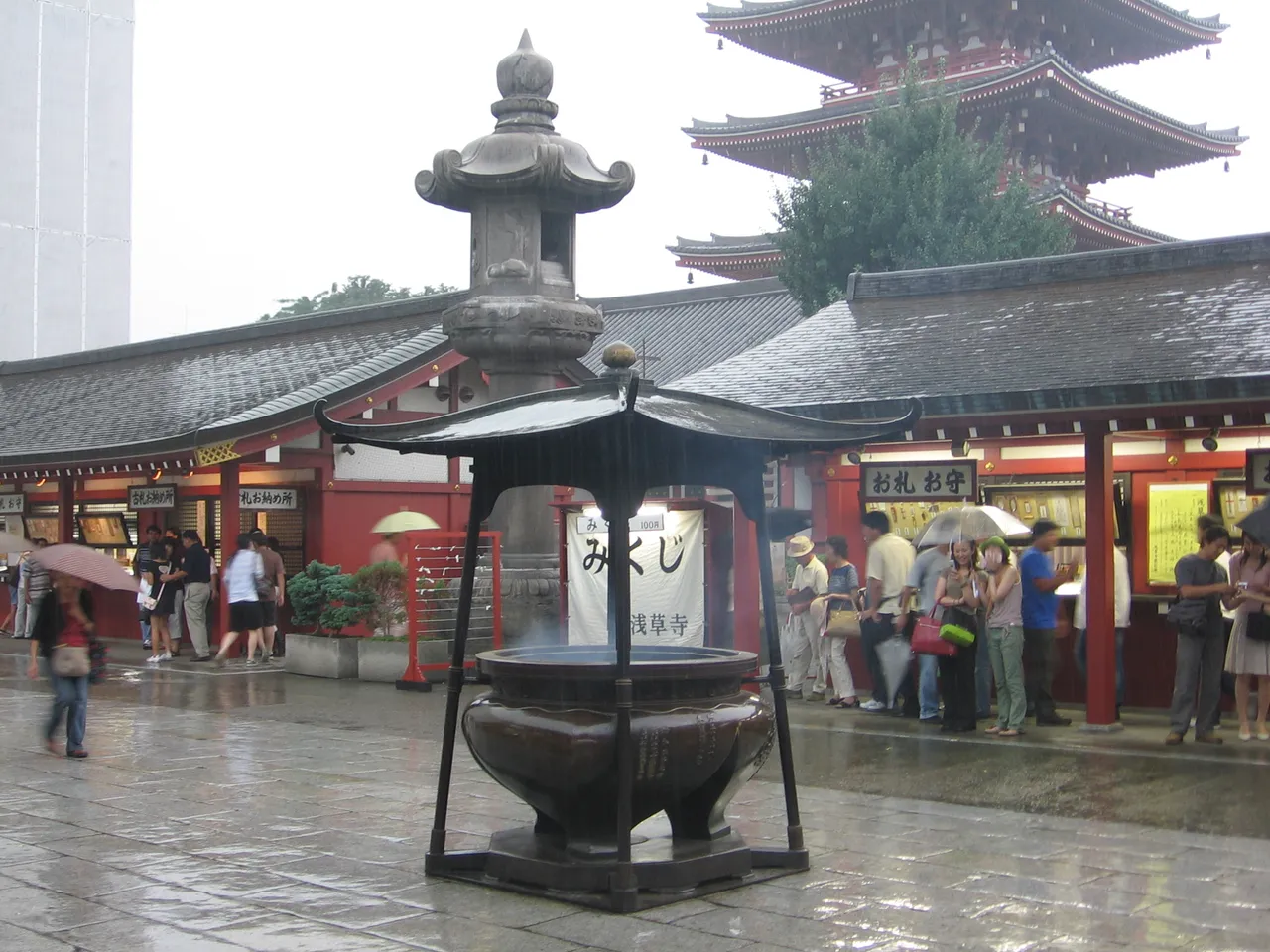
At that moment, the temple seemed even more imposing than usual, and we began to get the feeling that Senso-ji would not only endure this storm, but also other even more stormy times. How many visitors has it seen come and go, and how many wishes and prayers has it heard? There will be always a new day tomorrow.
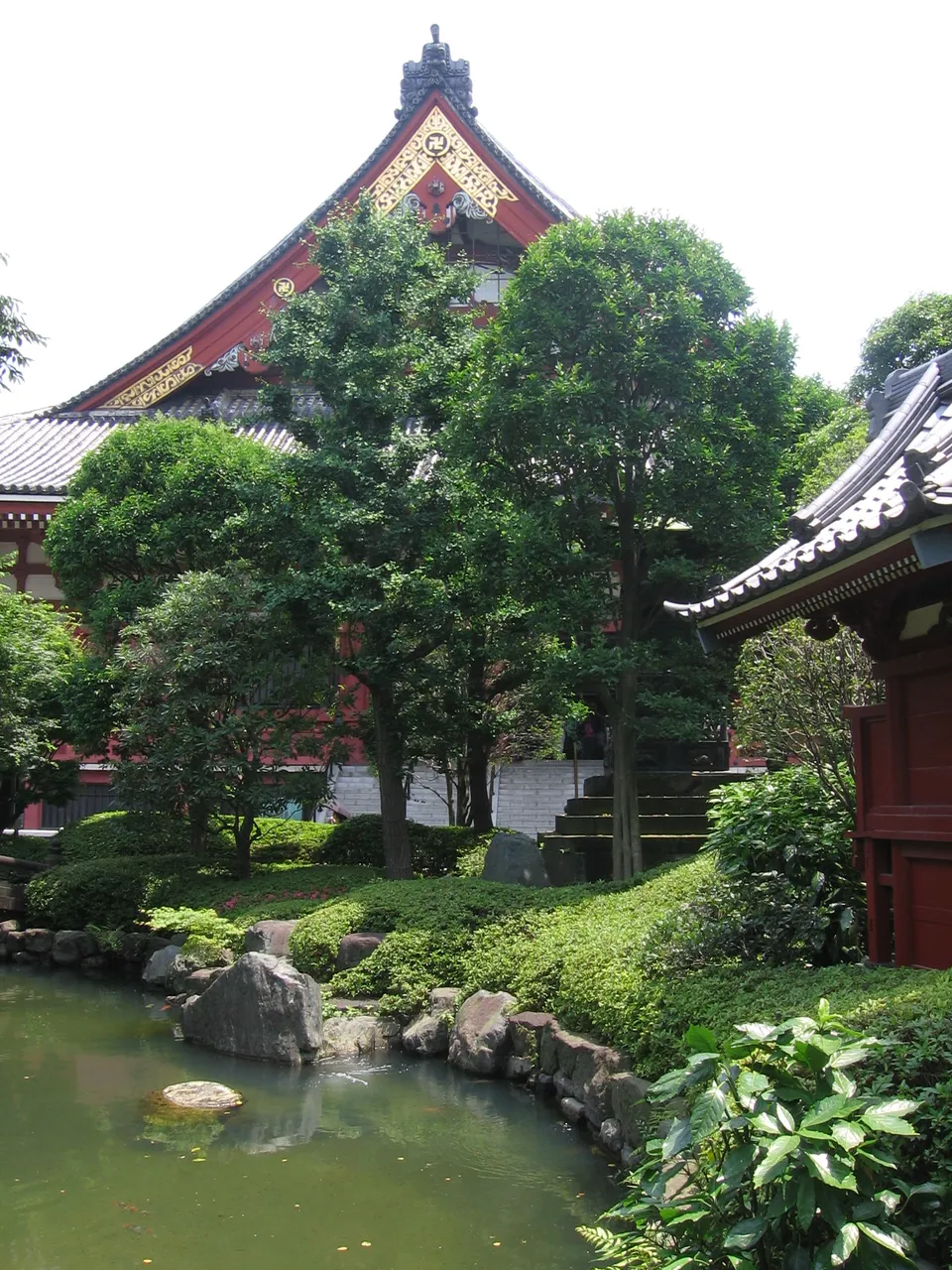
To the left and right of the main building, the temple complex stretches out a bit more and seems a bit more park-like. Some outbuildings with ponds and some green help to relax and loosen up the atmosphere and invite you to take a little break. Right next door you will also find the Asakusa shrine, again Buddhism and Shintoism go hand in hand and enter into a strong symbiosis.

A proper temple complex usually includes a pagoda, the bigger - the more important. And for this reason, the pagoda at Senso-ji has 5 proper stories, enough to make a decent impression. In front of the pagoda you can see some of the stalls, build there especially for the physical well-being of the visitors.
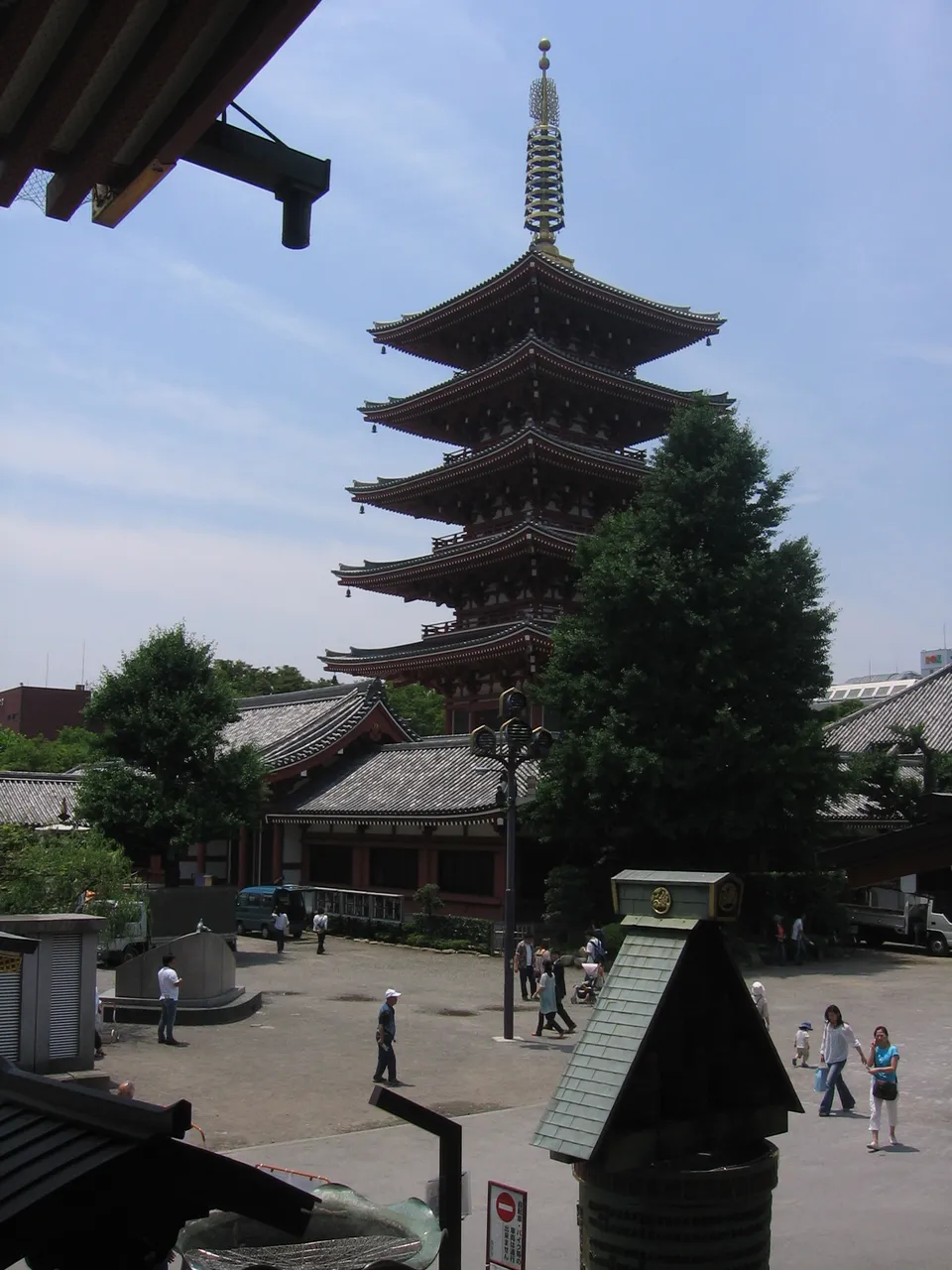
During my visits here I was lucky to come at times when I was not surrounded by crowds of people. Especially at very early hours, it is a bit quieter and more peaceful around Senso-ji, but those moments too have their very own charm.
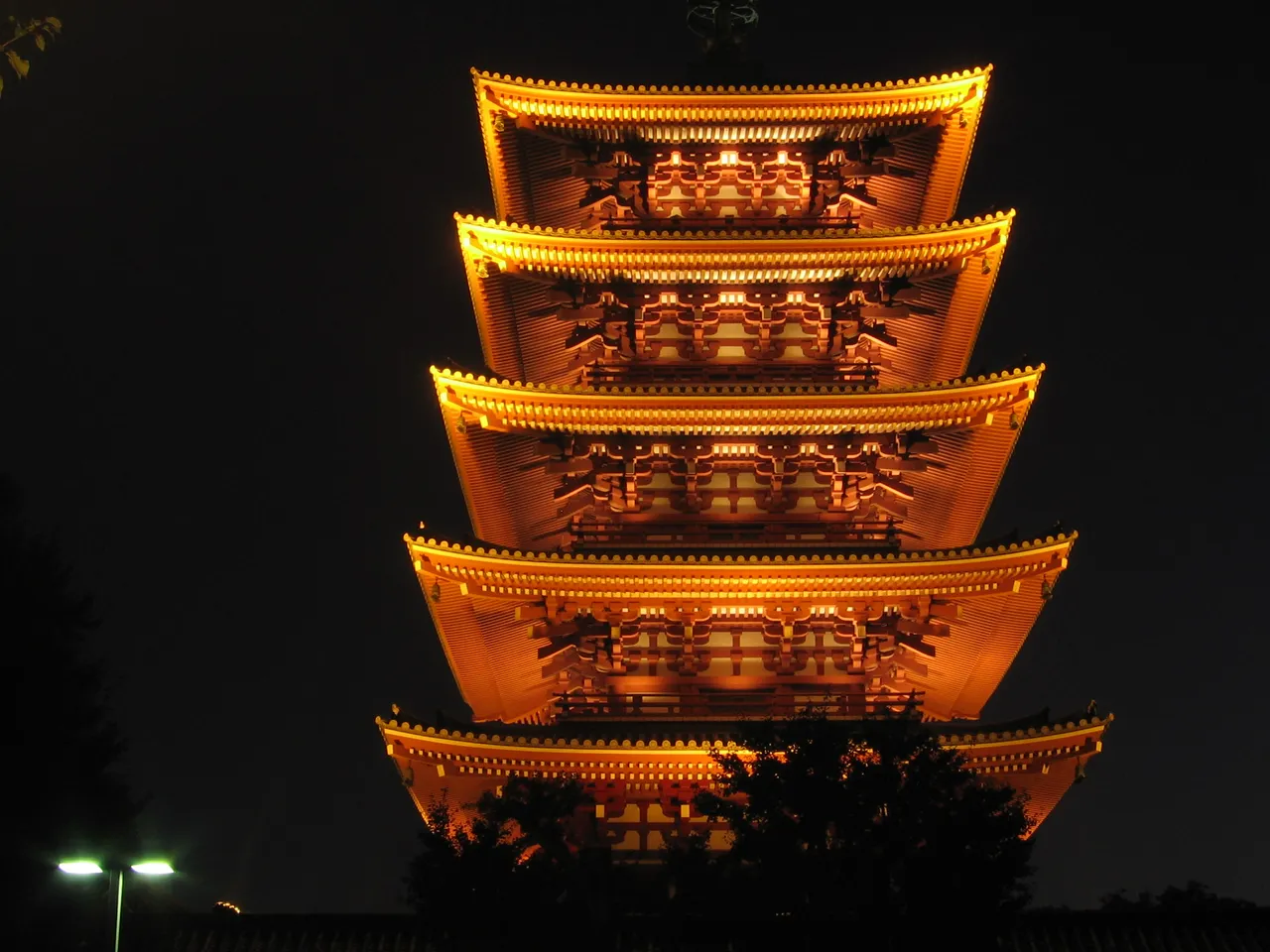
Of course I didn't miss the chance to have a look here even at a late hour, when all the visitors are long gone and you have the facility almost for yourself. And since the buildings were partially illuminated, you can perceive a completely different mood, and I then just sit down or stand for a while, to capture and save exactly this certain mood for.
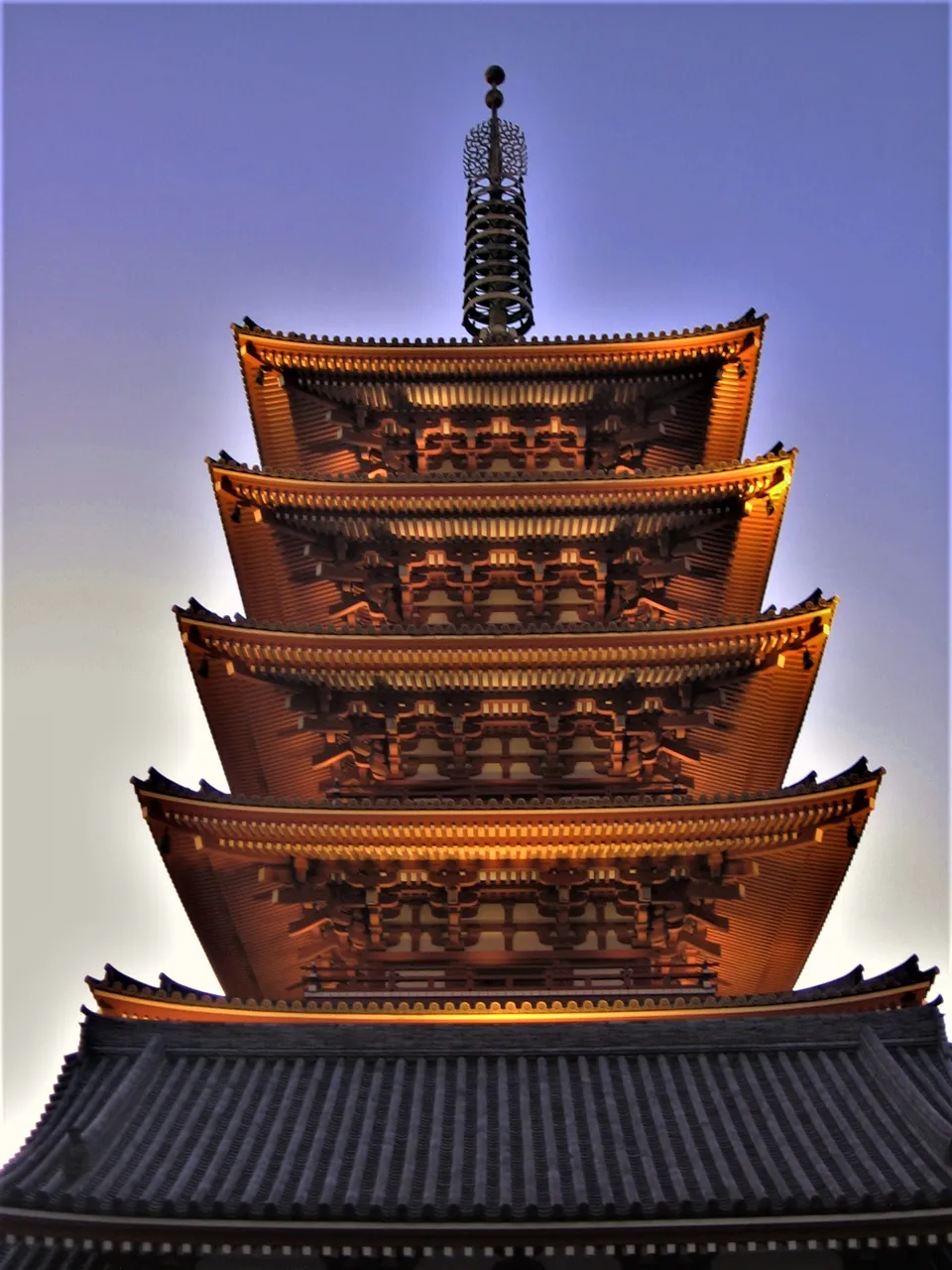
This positive energy that exudes from Senso-ji has attracted me again and again and brought me back here several times. And I'm already looking forward to the day when I'm finally back in Tokyo and can look around again. For sure I will also pay a new visit to Senso-ji, and although I have been here a few times already, I will be able to discover and experience something new.
That was our little trip to Tokyo today. Hopefully I could increase your interest in this wonderful and fascinating city even more. I'll be back with new pictures and impressions from the land of the rising sun soon.
またね matane
[//]:# (!pinmapple 35.714741 lat 139.796656 long When in Asakusa, Senso-ji is a must d3scr)
